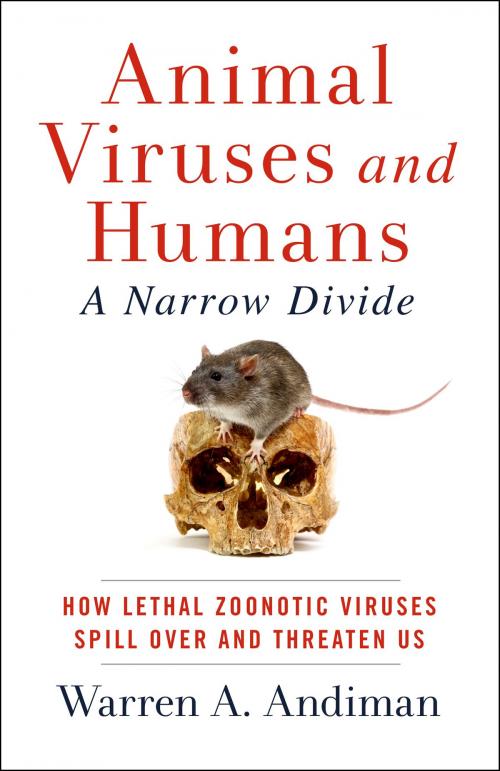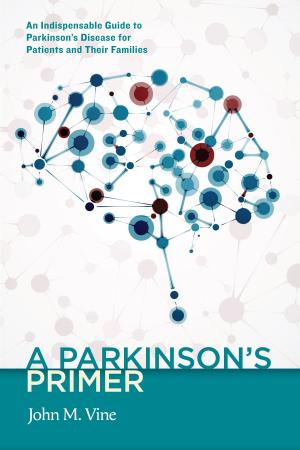Animal Viruses and Humans, a Narrow Divide
How Lethal Zoonotic Viruses Spill Over and Threaten Us
Nonfiction, Science & Nature, Science, Biological Sciences| Author: | Warren A. Andiman | ISBN: | 9781589883307 |
| Publisher: | Paul Dry Books | Publication: | May 31, 2018 |
| Imprint: | Language: | English |
| Author: | Warren A. Andiman |
| ISBN: | 9781589883307 |
| Publisher: | Paul Dry Books |
| Publication: | May 31, 2018 |
| Imprint: | |
| Language: | English |
“Dr. Andiman was at the forefront of the HIV/AIDS epidemic in America, so he knows as well as anyone the disrupting power of new viruses and their impact on human societies.”—Peter Hotez, MD, PhD, Dean, National School of Tropical Medicine at Baylor College of Medicine
“To reproduce promiscuously and to wreak havoc wherever they can find a home,” this is the sole raison d'être of viruses writes Dr. Warren Andiman, an HIV/AIDS researcher who has been on the front lines battling infectious diseases for over forty years. In Animal Viruses and Humans, A Narrow Divide, Dr. Andiman introduces readers to the ominous world of zoonotic viruses, those deadly microbes that sometimes spread directly from animals to humans.
Andiman traces the history of eight deadly zoonoses as they make the leap to human populations: Middle East Respiratory Syndrome (MERS), Swine influenza, Hantavirus, Monkeypox, Severe Acute Respiratory Syndrome (SARS), Rabies, Ebola, and Henipaviruses (Nipah and Hendra). Through these examples he describes the fundamental characteristics of zoonotic viruses: what they look like, where they come from, how they invade so efficiently, and when and why they infect human populations. He also illustrates the labor intensive and fascinating detective work that infectious disease specialists must do to uncover the source of an outbreak.
In these essays, Andiman looks to the future, making reference to the worrisome effects on zoonoses of climate change, microenvironmental damage, population shifts, and globalization. He describes some current trends in vaccine and antiviral drug development, and introduces organizations like the European Center for Disease Prevention and Control, the EcoHealth Alliance, and the National Academy of Medicine Commission on Global Risk Framework for the Future, all of which are tasked with anticipating future zoonoses. Andiman reveals the most important steps that we can, and must, take to stem the spread of animal viruses, explaining, “The zoonoses I've chosen to write about . . . are meant to describe only a small sample of what is already out there but, more menacingly, what is inevitably on its way, in forms we can only imagine.”
Dr. Warren Andiman is Professor emeritus of pediatrics and epidemiology at the Yale Schools of Medicine and Public Health. He received his medical degree from Albert Einstein College of Medicine in New York and completed his pediatric residency at Babies Hospital, part of the former Columbia-Presbyterian Medical Center. After serving a two-year stint as a Captain in the U.S. Army Medical Corps, he pursued a post-doctoral fellowship in pediatric infectious diseases at the Yale School of Medicine and joined the faculty on which he served for forty-two years.
At the start of the AIDS epidemic Dr. Andiman, with his associates, created the Pediatric AIDS Care Program at Yale-New Haven Hospital and served as its medical director for thirty-two years. He lives in Connecticut with his wife, also a pediatrician. They have two daughters.
“Dr. Andiman was at the forefront of the HIV/AIDS epidemic in America, so he knows as well as anyone the disrupting power of new viruses and their impact on human societies.”—Peter Hotez, MD, PhD, Dean, National School of Tropical Medicine at Baylor College of Medicine
“To reproduce promiscuously and to wreak havoc wherever they can find a home,” this is the sole raison d'être of viruses writes Dr. Warren Andiman, an HIV/AIDS researcher who has been on the front lines battling infectious diseases for over forty years. In Animal Viruses and Humans, A Narrow Divide, Dr. Andiman introduces readers to the ominous world of zoonotic viruses, those deadly microbes that sometimes spread directly from animals to humans.
Andiman traces the history of eight deadly zoonoses as they make the leap to human populations: Middle East Respiratory Syndrome (MERS), Swine influenza, Hantavirus, Monkeypox, Severe Acute Respiratory Syndrome (SARS), Rabies, Ebola, and Henipaviruses (Nipah and Hendra). Through these examples he describes the fundamental characteristics of zoonotic viruses: what they look like, where they come from, how they invade so efficiently, and when and why they infect human populations. He also illustrates the labor intensive and fascinating detective work that infectious disease specialists must do to uncover the source of an outbreak.
In these essays, Andiman looks to the future, making reference to the worrisome effects on zoonoses of climate change, microenvironmental damage, population shifts, and globalization. He describes some current trends in vaccine and antiviral drug development, and introduces organizations like the European Center for Disease Prevention and Control, the EcoHealth Alliance, and the National Academy of Medicine Commission on Global Risk Framework for the Future, all of which are tasked with anticipating future zoonoses. Andiman reveals the most important steps that we can, and must, take to stem the spread of animal viruses, explaining, “The zoonoses I've chosen to write about . . . are meant to describe only a small sample of what is already out there but, more menacingly, what is inevitably on its way, in forms we can only imagine.”
Dr. Warren Andiman is Professor emeritus of pediatrics and epidemiology at the Yale Schools of Medicine and Public Health. He received his medical degree from Albert Einstein College of Medicine in New York and completed his pediatric residency at Babies Hospital, part of the former Columbia-Presbyterian Medical Center. After serving a two-year stint as a Captain in the U.S. Army Medical Corps, he pursued a post-doctoral fellowship in pediatric infectious diseases at the Yale School of Medicine and joined the faculty on which he served for forty-two years.
At the start of the AIDS epidemic Dr. Andiman, with his associates, created the Pediatric AIDS Care Program at Yale-New Haven Hospital and served as its medical director for thirty-two years. He lives in Connecticut with his wife, also a pediatrician. They have two daughters.















